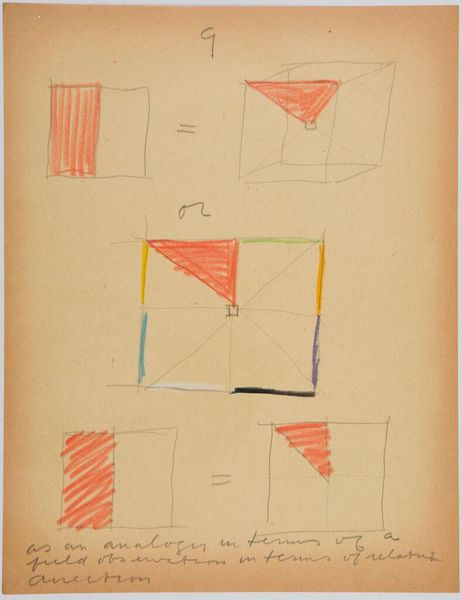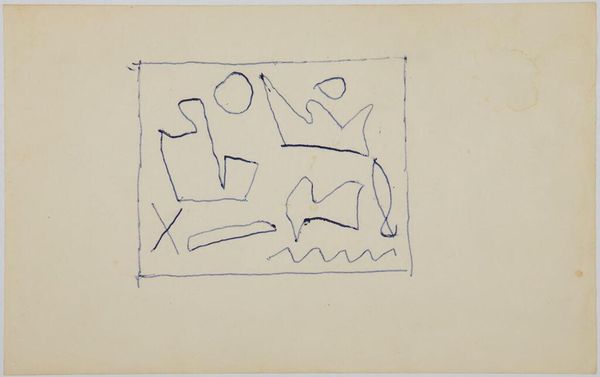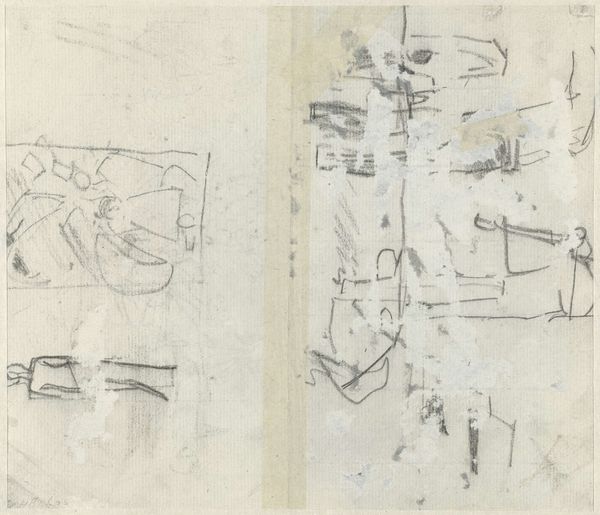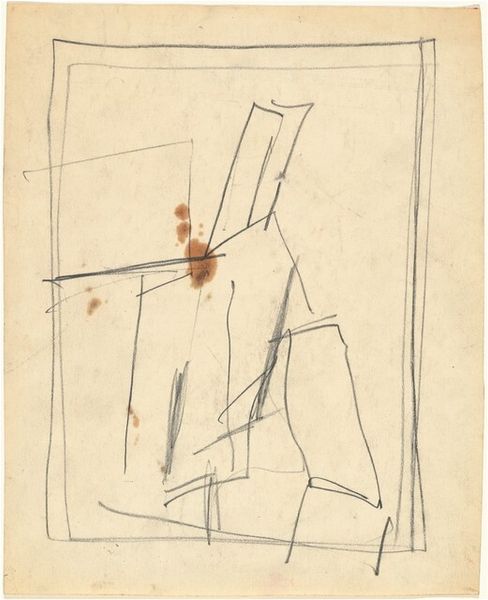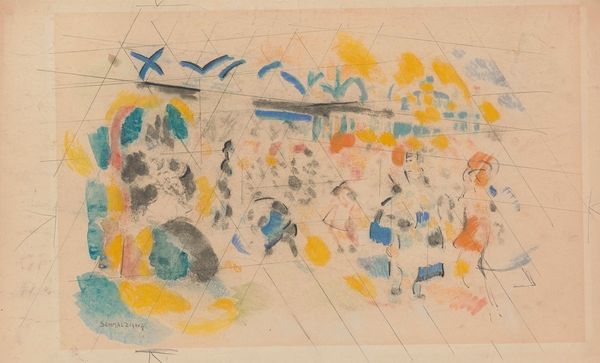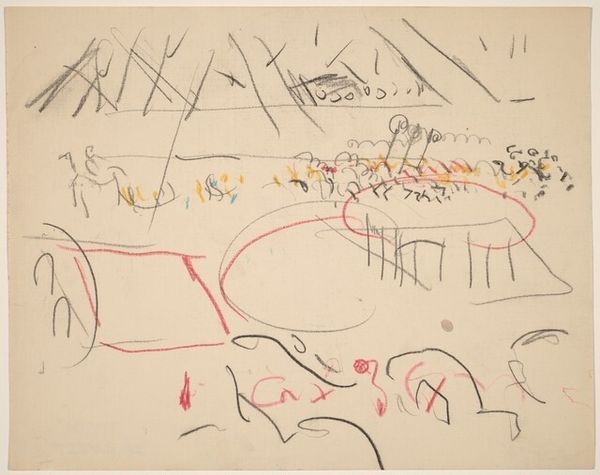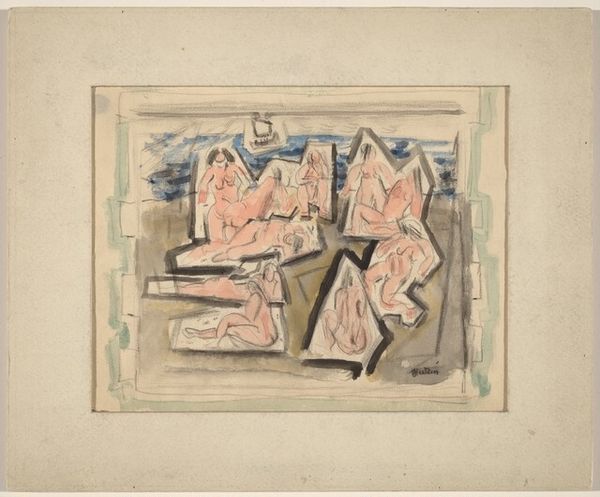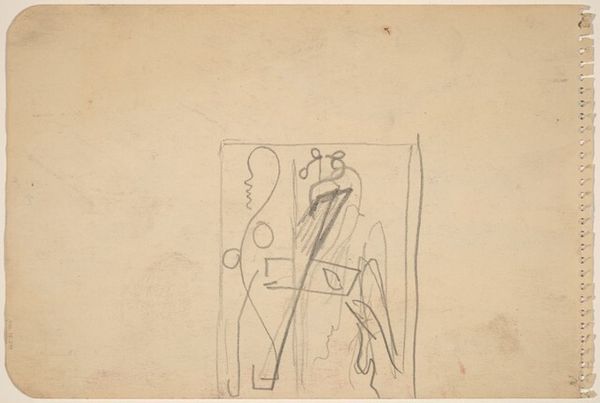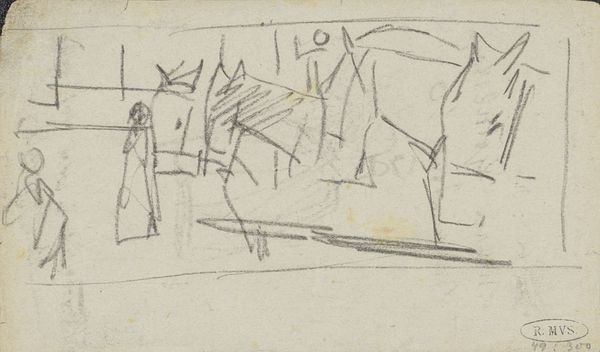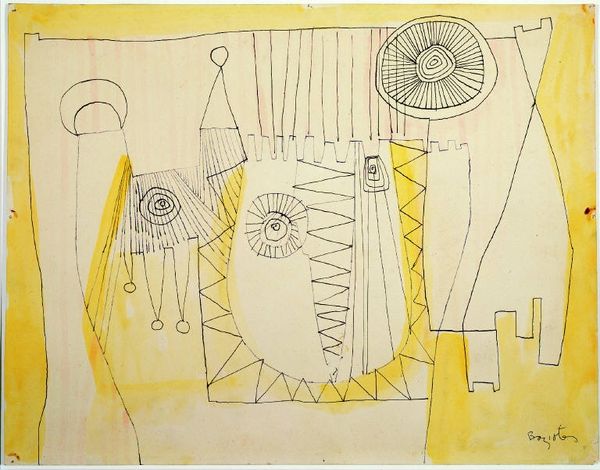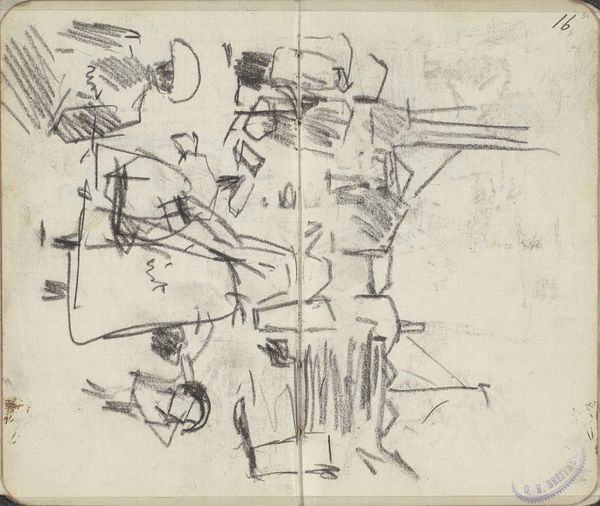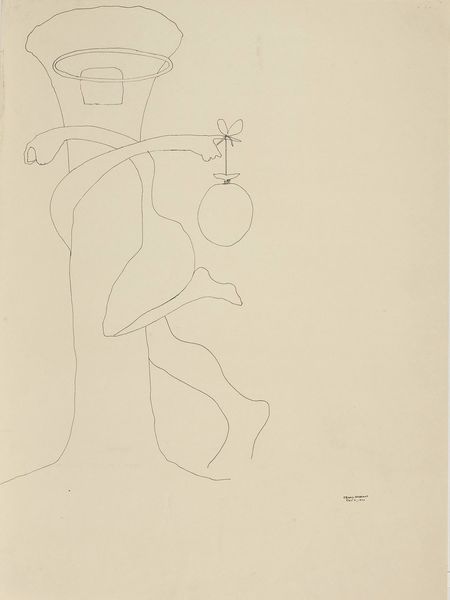
coloured-pencil, watercolor
#
cubism
#
art-nouveau
#
coloured-pencil
#
figuration
#
abstract
#
form
#
watercolor
#
coloured pencil
#
abstraction
#
line
Copyright: Public Domain: Artvee
Editor: Here we have Paul Klee's "Acrobats," created in 1915 using watercolor and colored pencil. The delicate lines and washes give it a whimsical feeling, almost like a child's drawing. What do you see in this piece? Curator: Immediately, the structural relationship between line and color field dominates my reading. Klee presents us not with representational figures, but rather with an articulation of space through formal devices. Note how the linear scaffolding provides a skeletal framework upon which the washes of color are almost arbitrarily applied, disrupting any straightforward mimetic reading. Editor: Arbitrary? It seems like the color helps define the figures, giving them depth. The blue, especially. Curator: But does it? Consider the blue field, ostensibly defining a figure, yet existing independently of the linear structure beneath it. It's a disruption of pictorial unity, forcing us to acknowledge the autonomy of each formal element. How does the orientation of shapes affect your reading of 'balance', or lack thereof, in the picture's design? Editor: I hadn't thought about it that way. It's almost like he's deconstructing the idea of a figure, reducing it to its basic components of line and color. Now I see that the imbalance could create a kind of tension. Curator: Precisely! Klee’s engagement is not with illusionistic representation, but rather with a discourse on the very language of painting itself. A fascinating example of early 20th-century formalism. Editor: I see it so differently now. Focusing on those elements of form makes the acrobat theme almost secondary to the art itself.
Comments
No comments
Be the first to comment and join the conversation on the ultimate creative platform.
